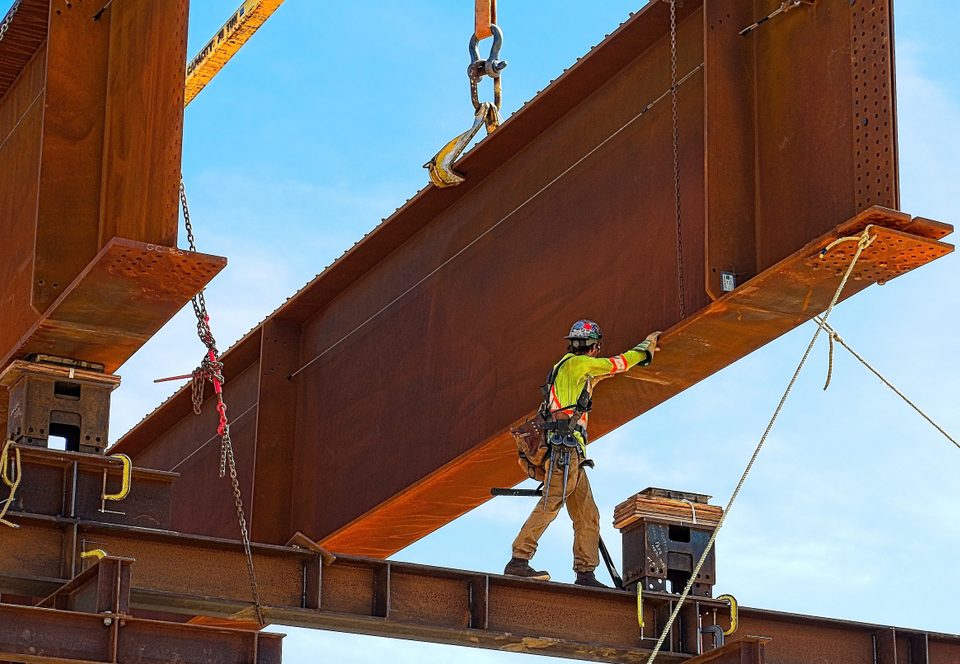How Steel Shielded Metal Arc Welding Works

Steel for Roofing: Uses Across Common Building Types
March 26, 2021
Lesser-Known Qualities and Applications of Stainless Steel
April 27, 2021One of the most common processes in the metal and steel world is welding, and there are a variety of different welding formats that may be taken depending on the needs of a given project. One of the oldest forms of welding, and one of a few different processes that fall under the category of a fusion arc welding approach, is known as shielded metal arc welding, or SMAW for short.
At Wasatch Steel, we’re happy to discuss welding properties and any other important characteristics of any of our steel sheet, steel bar, steel plate and other steel products with any of our clients. We’ll happily advise you on which of our steel products might be best for shielded metal arc welding, a process that’s commonly used on several different kinds of steel. What exactly is the SMAW process, how is it carried out, and what are some of its benefits and drawbacks you should be considering for any job where you’re thinking of ordering this process? Here are some basic variables to be aware of.
Shielded Metal Arc Welding Basics and Definition
As we noted above, shielded metal arc welding falls into the category of a fusion arc welding process, which means that it’s done to coalesce two or more metals together as part of the process. This coalescence creates metallurgical bonds, the type that are required to form a strong weld.
Generally, the SMAW process will use an electric arc to heat the metal to well above its melting temperature – this is what creates the coalescence needed. An electrode rod will be used here, sometimes called a “stick electrode” – for this reason, SMAW is often referred to as stick welding in some circles.
In addition, as the name indicates, this process is shielded. This means the weld pool is blocked from the atmosphere using a flux that’s coated straight onto the consumable stick electrode, a bit different from some other welding processes.
How Shielded Metal Arc Welding is Done
Here are the basic steps of how shielded metal arc welding will be carried out:
- Step 1: A SMAW welding power source must be turned on, creating enough energy to create the electric arc to melt the metal in question. Both an electrode holder and a work clamp are attached to this power source, with the clamp also connected to a conductive surface that holds the workpiece. From here, a stick electrode is placed in the holder.
- Step 2: The rod will be lightly scratched over the surface of the desired weld area as a way of initiating the electric arc. As it builds up, the arc begins to melt both the rod and the workpiece, and the rod becomes a form of additional welding metal as it melts. In addition, the flux on the rod also begins to melt, emitting gasses, liquids and solids around the weld pool that stop any oxidization or porosity risks.
- Step 3: Once the weld itself is done and has begun to cool, a slag film will be formed over top from the flux on the electrode. This slag must be removed before any additional welding passes, and especially before any coating processes.
Common Metals
As we noted above, steel is a common metal that’s applied to the shielded metal arc welding process – but some other metals won’t work as well here. Specifically, non-ferrous metals don’t usually see this process done; aluminum may have limited use for this method, but it usually involves a different type of welding.
However, steel often works quite well for SMAW projects. In particular, carbon and tool steel are welded easily and commonly using shielded metal arc welding, and stainless steel also does relatively well. Other metals that are often used for this process include cast iron, copper and nickel.
If you’re wondering about whether a given steel is ideal for this process, contact our team. We’re experienced with a variety of welding processes and which are best for our steel products, and will be happy to guide you in the right direction.
Benefits of Shielded Metal Arc Welding
There are a few key reasons why shielded metal arc welding will be used in several different applications and for varying metals. Some of this process’s key benefits include:
- Low cost: Compared to other welding processes, shielded metal arc welding has a relatively low price point and is easy to carry out, keeping labor costs low if you outsource as well.
- Dirtier metals: While you should of course be performing as much cleaning as reasonably possible for any metal you’ll be welding, shielded metal arc welding is known to do well with “dirtier” metals that can only achieve a certain cleanliness level.
- Applications: For the above reasons, shielded metal arc welding is often used for outdoor and field welding needs.
Drawbacks of Shielded Metal Arc Welding
At the same time, there are some definite disadvantages of shielded metal arc welding depending on your needs. These include:
- Slow process: While the process is simple and affordable, the SMAW approach does take significant time compared to other processes.
- Inefficient: Because stubs need to be thrown out after each weld, the deposition of consumable rod use for this method is not efficient compared to other methods.
- Spatter and slag: SMAW processes create significant spatter, plus require slag removal, which we went over above.
For more on the shielded metal arc welding process for steel, or to learn about any of our steel products or steel services, speak to the staff at Wasatch Steel today.



